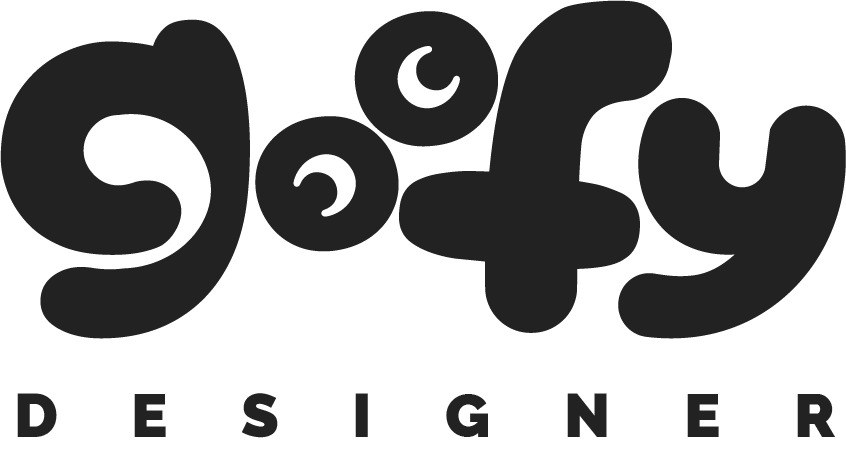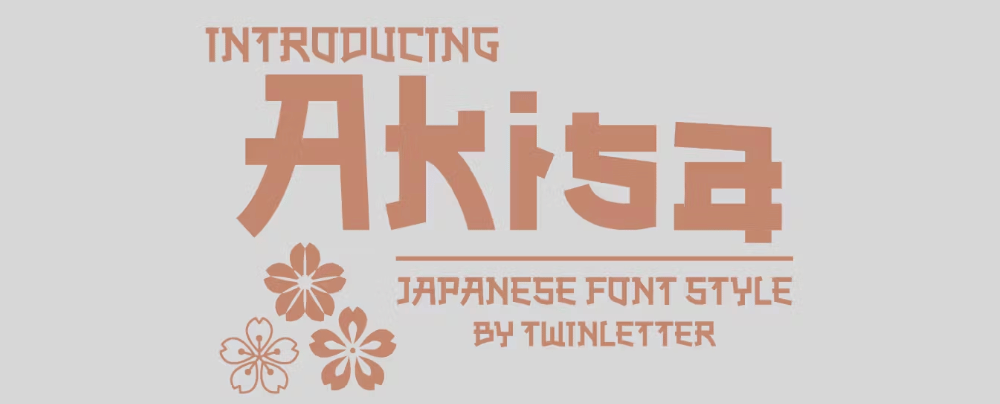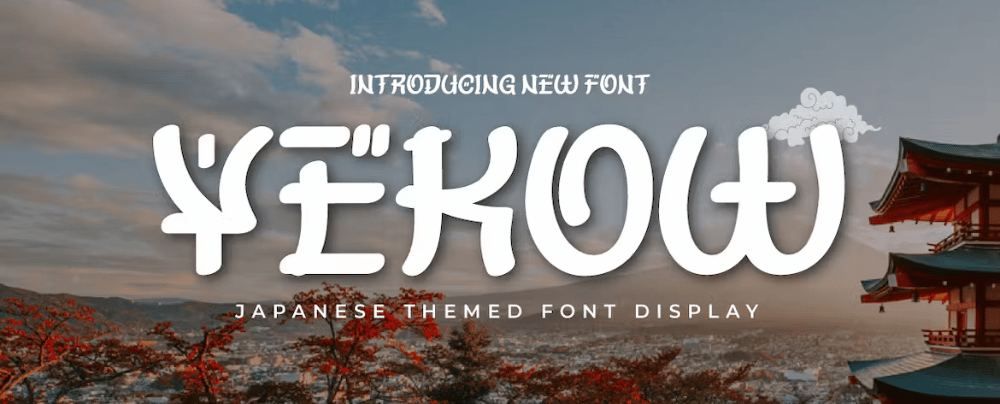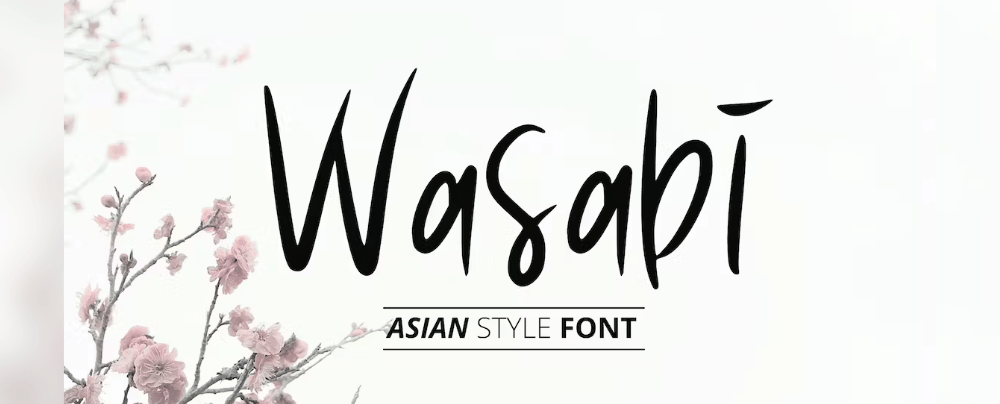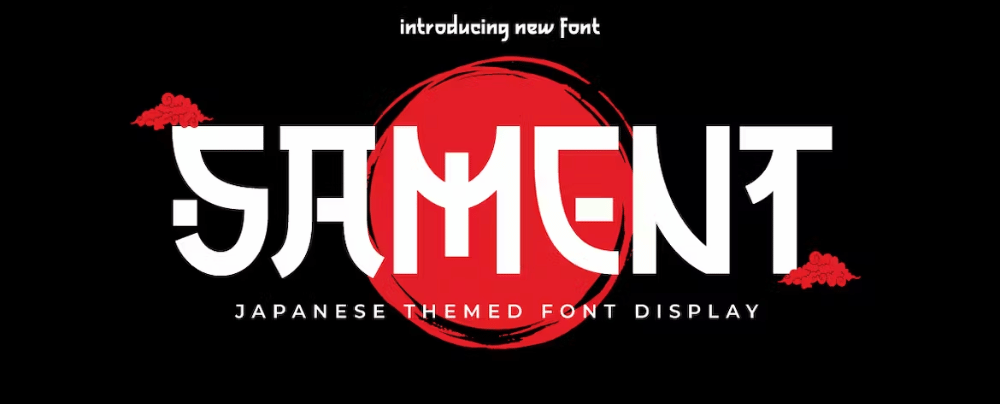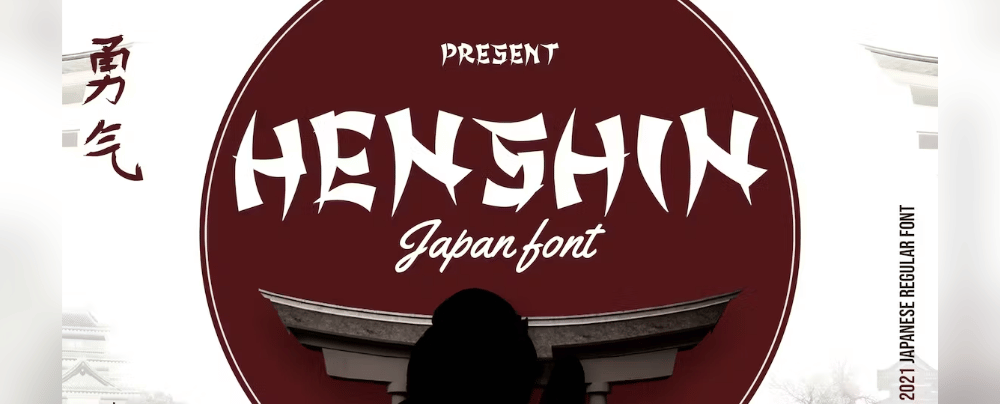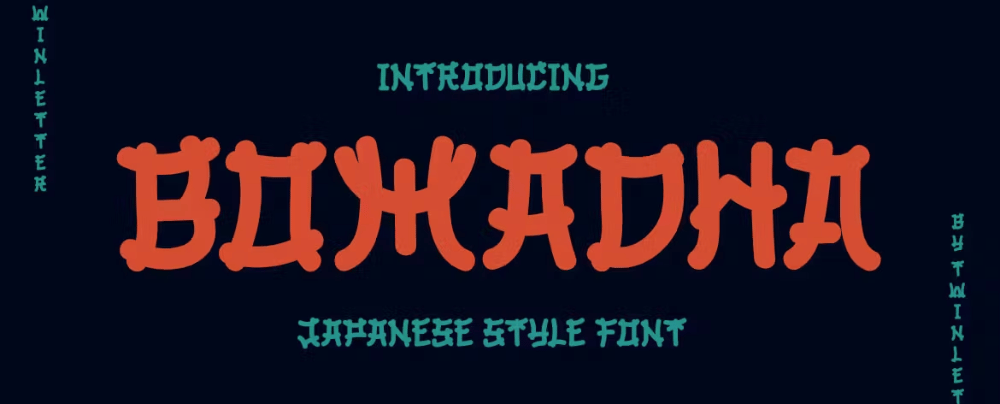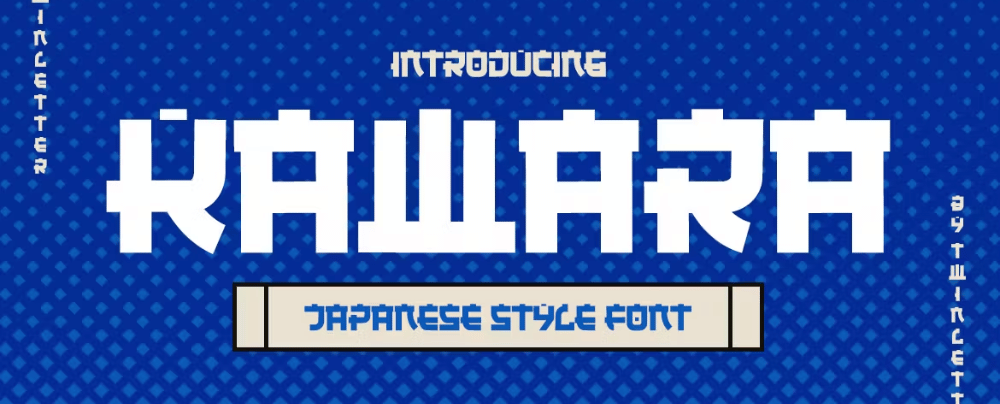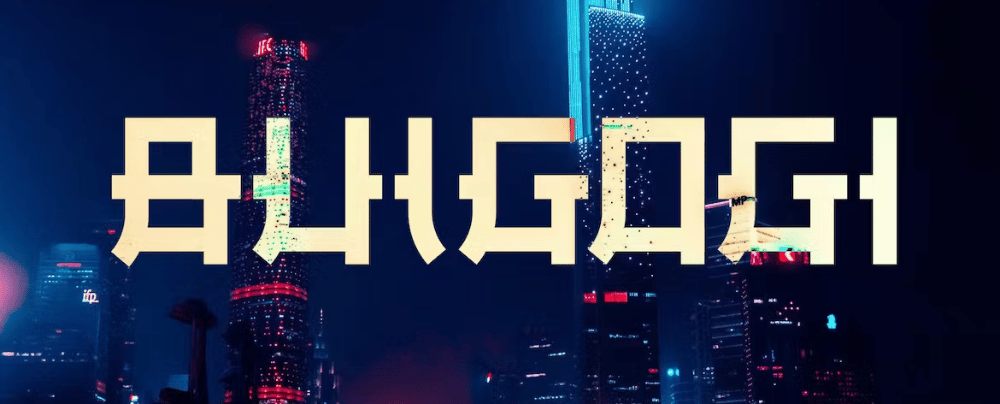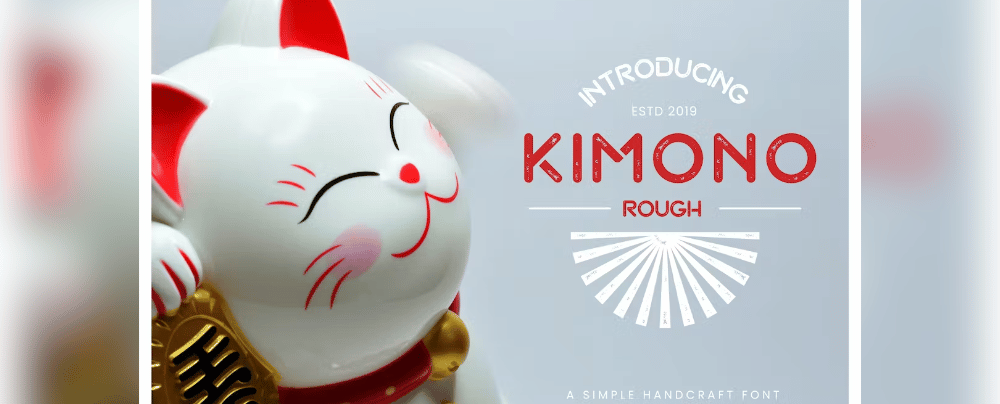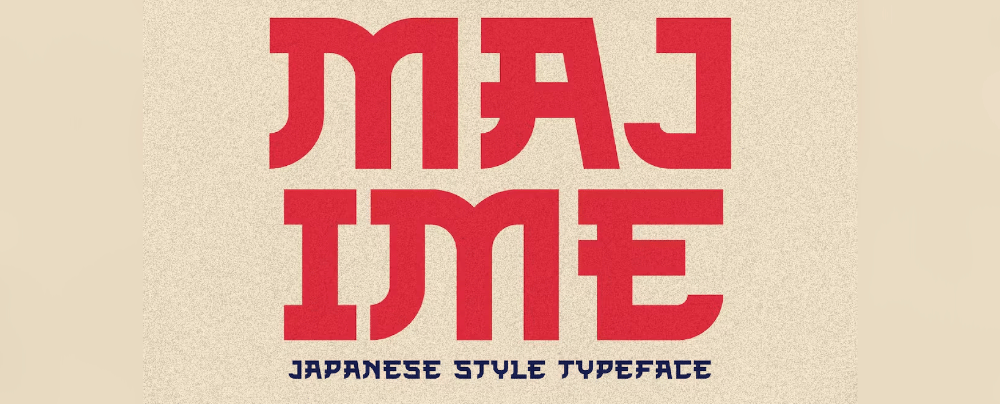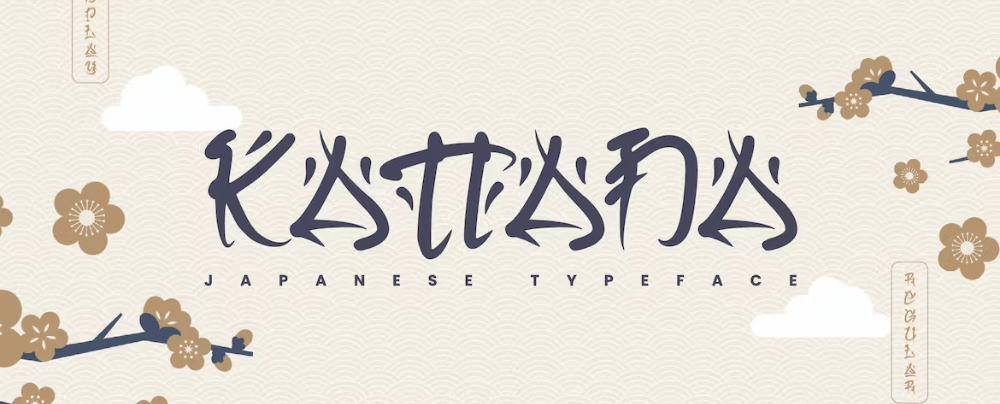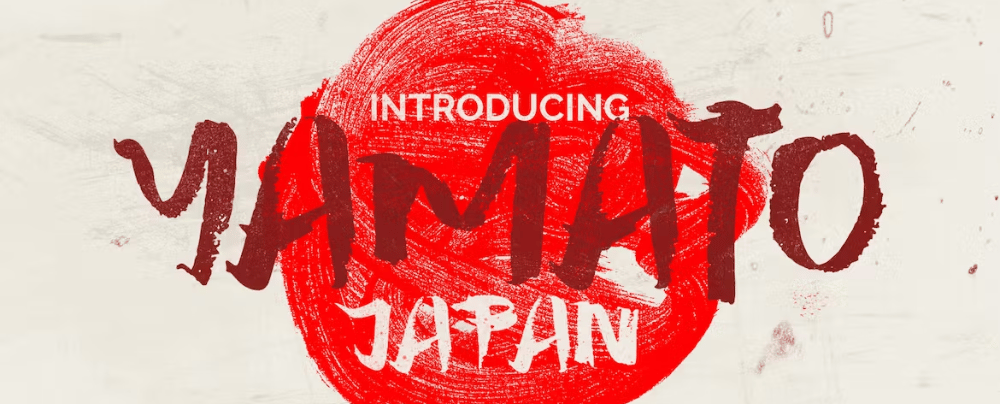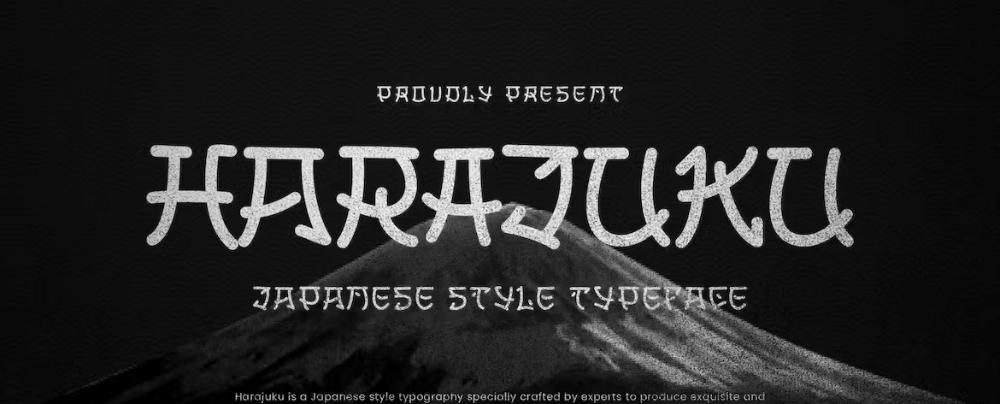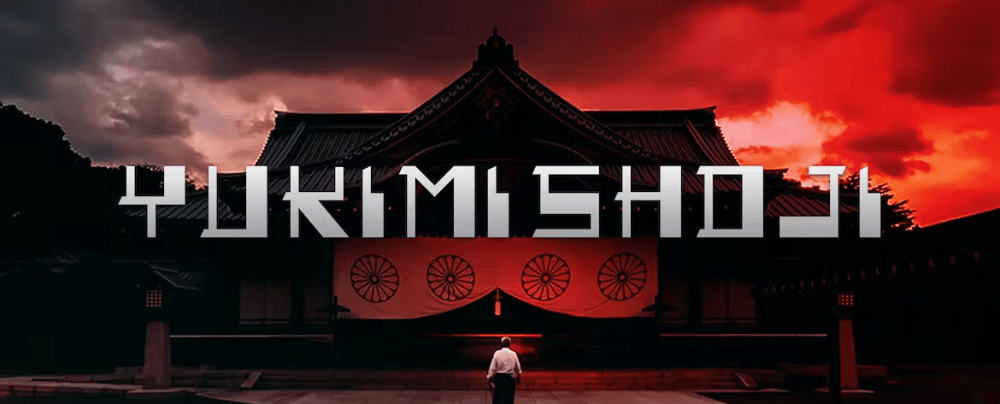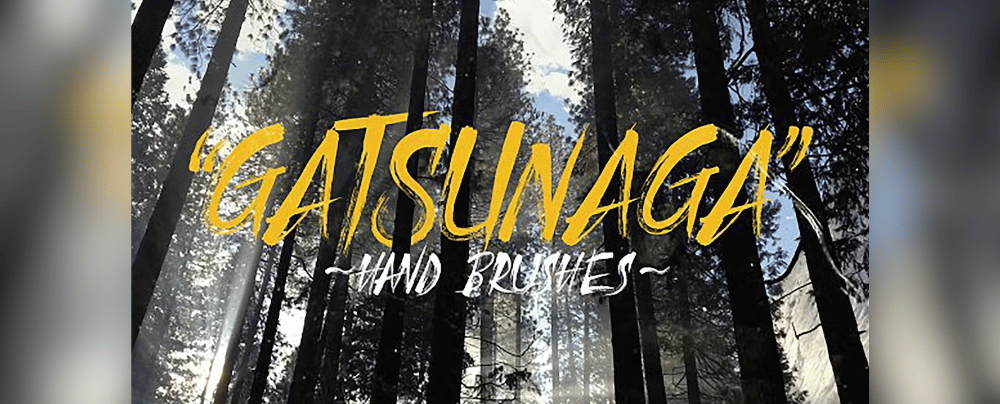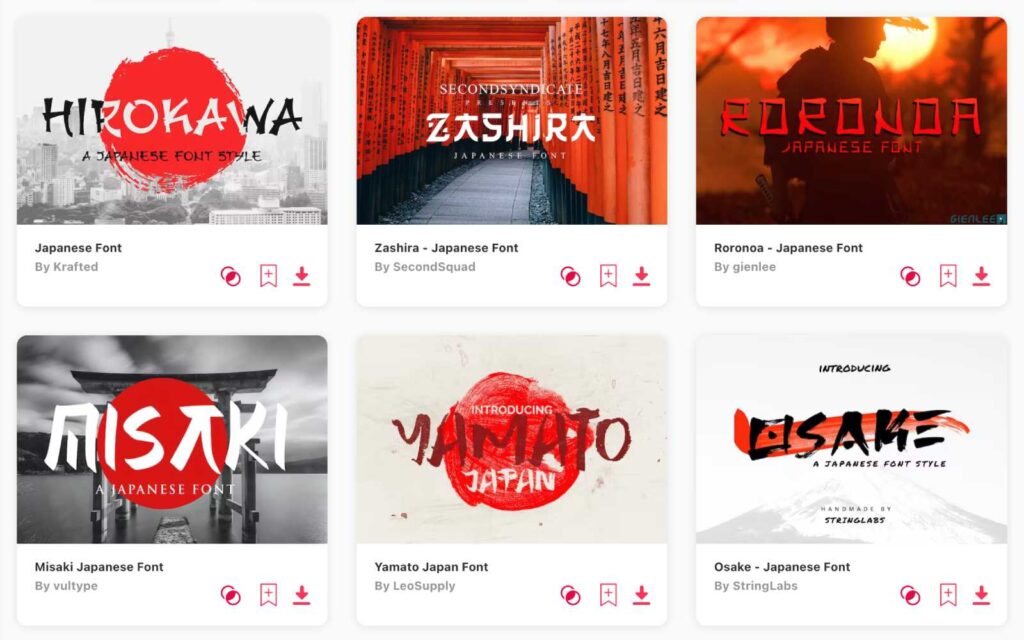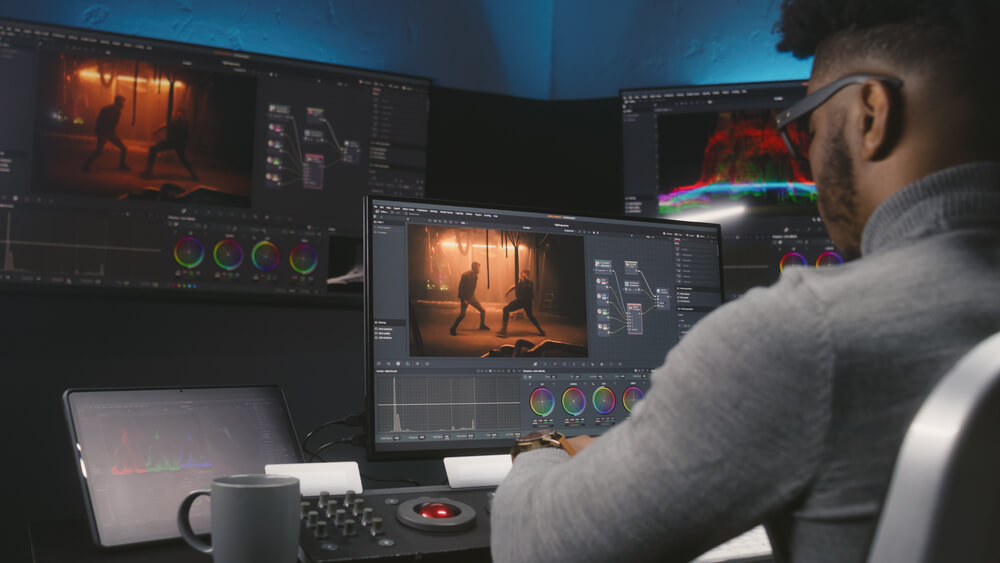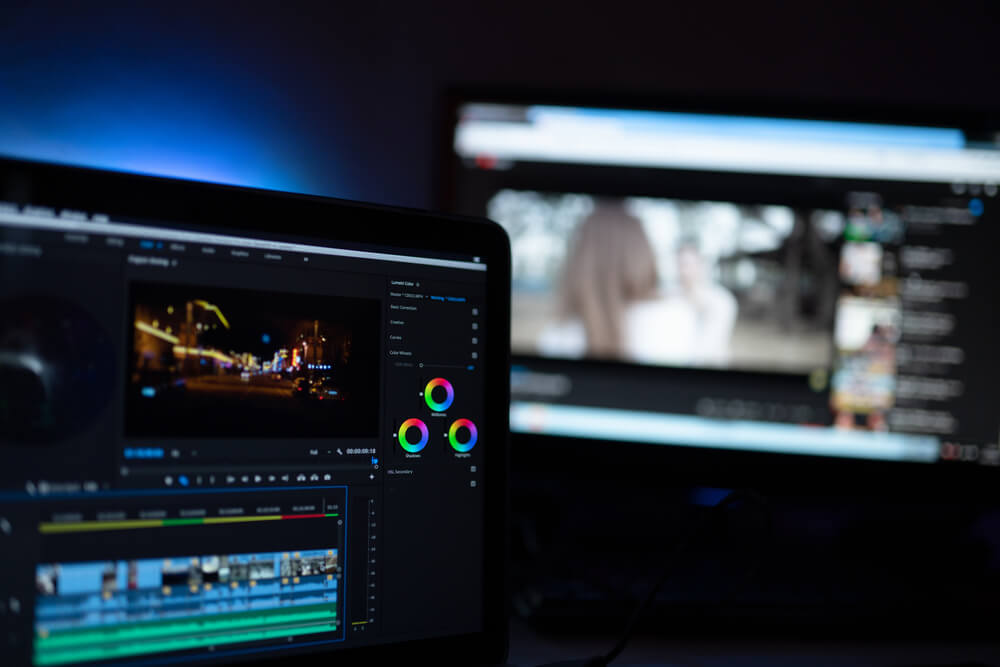



Summary: Today, I've handpicked a list of 23 amazing Japanese fonts, each offering its own unique flavor of Japanese culture and style. My TOP 3 favorites are:
- Makise – my top choice: clean, readable and versatile
- Yamato – ideal for designs that aim for timelessness.
- Yukimi Shoji – brings in the classic and elegant feel of Japanese Shoji screens.
In my eyes, Japanese fonts are not just pretty, they're full of culture and can be used in lots of ways. Whether you're designing a menu for a sushi spot or making a cool poster, the right font makes it feel more real and special. Let's explore these unique styles together; each font tells its own little story and lets you express yourself in a new way.
Makise
- Licence: Envato
- About Makise: Captures the elegance and tradition of Japanese calligraphy, making it perfect for projects that seek authenticity and a classic touch.
Samuri
- Licence: Envato
- About Samuri: Combines a faux-Japanese aesthetic with a warrior’s spirit, suitable for designs that aim to convey the Samurai culture.
Akisa
- Licence: Envato
- About Akisa: Features a modern faux-Japanese typeface that balances elegance and simplicity, ideal for projects aiming for a contemporary Japanese vibe.
YEKOW
- Licence: Envato
- About YEKOW: Offers a bold and modern typeface inspired by Japanese characters, perfect for designs that want to make a strong visual impact.
Wasabi
- Licence: Envato
- About Wasabi: Incorporates Asian influences, with an emphasis on Japanese aesthetic, ideal for creating designs with a far-Eastern flair.
RAMISA
- Licence: Envato
- About RAMISA: A faux-Japanese font that offers a contemporary touch while mimicking traditional Japanese typography, suitable for modern projects seeking a Japanese feel.
SAMENT
- Licence: Envato
- About SAMENT: Provides a playful yet traditional Japanese style, making it ideal for designs that aim to capture the essence of modern Japan.
HENSHIN
- Licence: Envato
- About HENSHIN: A transformative font that combines faux-Japanese characters with modern design elements, ideal for projects that seek a fusion aesthetic.
Xincpinc
- Licence: Envato
- About Xincpinc: Takes inspiration from Asian cuisine, offering a flavorful and expressive typeface that spices up any design.
Bomadha
- Licence: Envato
- About Bomadha: Combines traditional Japanese elements with modern sensibilities, ideal for projects that seek to blend old and new.
KAWARA
- Licence: Envato
- About KAWARA: Offers a typeface inspired by traditional Japanese architecture, making it perfect for designs related to history or travel.
Zetwih
- Licence: Envato
- About Zetwih: Provides a modern take on traditional Japanese script, suitable for contemporary projects that require an authentic Japanese touch.
Bulgogi
- Licence: Envato
- About Bulgogi: A display typeface that captures the essence of Asian cultures, with a focus on Japanese aesthetics, perfect for projects with ethnic themes.
Kimono
- Licence: Envato
- About Kimono: Captures the elegance and intricate designs of traditional Japanese kimonos, making it ideal for culturally rich projects.
Majime
- Licence: Envato
- About Majime: Offers a no-nonsense typeface that reflects the Japanese virtue of seriousness and reliability, ideal for business and corporate projects.
Kattana
- Licence: Envato
- About Kattana: A business-friendly font that takes inspiration from Japanese corporate culture, suitable for professional projects and presentations.
Yamato
- Licence: Envato
- About Yamato Japan: Provides an elegant typeface inspired by the historical Yamato period of Japan, ideal for projects that require a sense of timelessness.
Harajuku
- Licence: Envato
- About Harajuku: Inspired by the modern and trendy Harajuku district, this font combines Japanese business aesthetics with youthful exuberance.
Yukimi Shoji
- Licence: Envato
- About Yukimi Shoji: An authentic Japanese typeface that captures the elegance and tradition of Japanese Shoji screens, perfect for classic designs.
SUNRIZE
- Licence: Envato
- About SUNRIZE: Offers a rising sun aesthetic in its faux-Japanese characters, making it ideal for projects that aim to inspire and uplift.
Gatsunaga
- Licence: Envato
- About Gatsunaga: Provides a strong yet elegant typeface inspired by Japanese Kanji characters, suitable for projects that require a touch of strength and tradition.
Kayooh
- Licence: Envato
- About Kayooh: A sleek, modern font designed for the fast-paced Japanese business world, ideal for corporate and tech-focused projects.
UNGAI
- Licence: Envato
- About UNGAI: Features a faux-Japanese style that mimics the look of traditional Japanese typography, suitable for casual and creative projects.
Want more amazing fonts?
Browse tons of fonts & design elements!
- If you want to find more fonts, browse my favorite site: Envato Elements.
- On Envato, you can get unlimited downloads of thousands of design assets just with 1 subscription.
- I personally use Envato for all my designs and couldn’t be happier – it helps me save so much time.
- They have literally millions of stock photos, videos, fonts, templates, music, and much more!
How to pick the best Japanese font?
- Choose a Specific Mood: Japanese fonts vary from traditional and elegant to modern and bold. Determine the atmosphere you aim to evoke in your design and choose a font that aligns with your vision.
- Ensure Readability: Japanese fonts can feature complex Kanji characters or minimalist Hiragana and Katakana. Balance complexity with legibility, especially if you're aiming for designs with longer passages of text.
- Match Your Design: Whether you are working on a tech project or something rooted in traditional Japanese culture, select a font that fits seamlessly with the other design elements.
- Consider Your Audience: Different Japanese fonts may resonate with different audiences—be it a younger generation who appreciates modern aesthetics, or an older audience who values tradition. Know your audience and choose accordingly.
- Trust Your Instincts: After you've assessed the various technical and stylistic considerations, you might find that the best Japanese font for your project is simply the one that “feels” right. Trust your own creative judgment in making the final decision.
What are Japanese fonts usually used for?
- Graphic Design and Typography: Japanese fonts are widely used in graphic design projects that aim to evoke a Japanese aesthetic, either traditional or modern.
- Branding and Logo Design: Businesses that aim for a Japanese appeal in their branding often opt for Japanese fonts to communicate authenticity and culture.
- Culinary Arts: Menus for Japanese restaurants, as well as packaging for Japanese food products, often use these fonts to establish thematic consistency and appeal.
- Cultural and Historical Publications: When publishing materials that delve into Japanese history or culture, these fonts can help enhance the thematic depth of the content.
- Video Games and Entertainment: Japanese fonts are often used in video games, especially those set in Japan or influenced by Japanese culture, to add an authentic touch.
- Traditional Crafts: Fonts inspired by Japanese calligraphy or traditional art forms are used in the design of traditional crafts like kimonos, ceramics, and scrolls.
- Web Design: Websites that focus on Japanese products, travel, or culture often use Japanese fonts to establish a cohesive and authentic user experience.
- Movie and Book Titles: For media works set in Japan or exploring Japanese themes, these fonts can serve as an impactful element in titles or promotional material.
- Social Media Marketing: Posts that aim to target a Japanese audience or celebrate Japanese culture often utilize these fonts for better engagement and cultural relevance.
- Educational Material: Textbooks or online courses that teach the Japanese language or cultural aspects frequently use Japanese fonts to help learners familiarize themselves with various script styles.
Conclusion
In my opinion, picking the right Japanese font is all about setting the mood and making a connection with your audience. If you're looking for something that captures the essence of traditional Japanese culture, I'd strongly suggest checking out Makise, Yamato, or Yukimi Shoji. Each of these fonts has its own distinct charm and can add a layer of authenticity to your project. Whether you're designing a menu for a sushi restaurant or crafting a travel blog about Japan, these fonts are surefire picks to elevate your work. So don't hesitate—give them a try and let your creative spirit shine. Happy designing!
